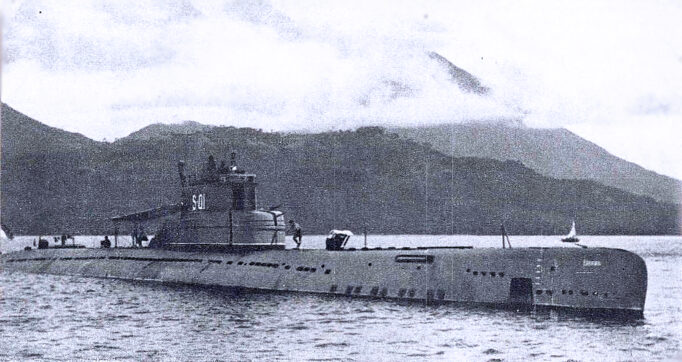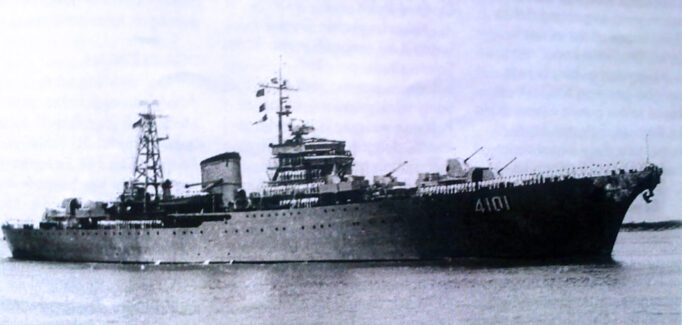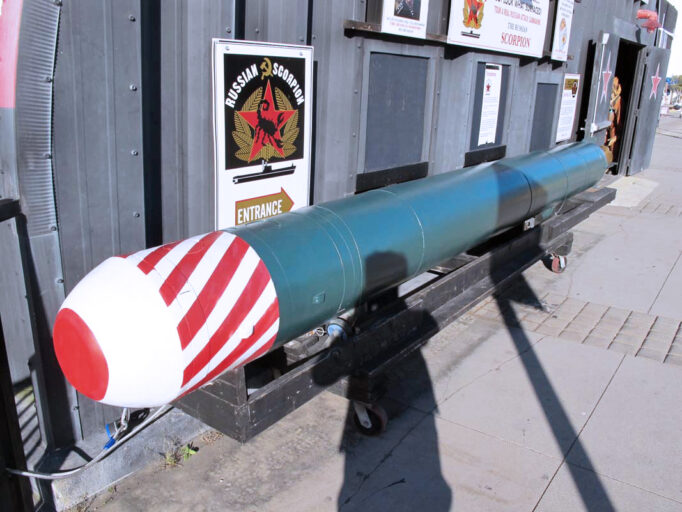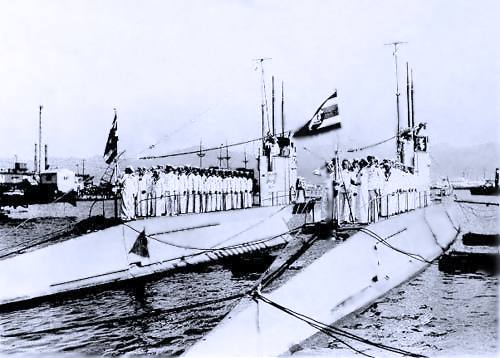The two oldest undersea forces established on 04-September-1937 and 12-September-1959 have the distinction of having the first Submarine Forces in the Southeast Asian region. These are the Royal Thai Navy and the Indonesian Navy Force.
The Royal Thai Navy acquired its first Submarines through bidding which was won by Mitsubishi Heavy Industries of Japan for a price 75,000 Pounds for each ship.
The Submarines were known as the Matchanu class in the Royal Thai Navy service comprising:
- HTMS Matchanu;
- HTMS Wirun;
- HTMS Sinsamut; and
- HTMS Phlai Chumphon.
Their namesake were the epic Thai literary characters with mythical diving capabilities. They were classified as Coastal Defense Submarines with a displacement of 368 tons and armed with four 18-inch torpedoes, an 8mm deck gun, and a 25mm machine gun.
All 4 boats were commissioned on 19-July-1938 after a voyage from the city of Kobe, Japan to Keelung, Formosa (present day Taiwan) and Manila, Philippines. After the 24-day voyage, they arrived at the capital city of Bangkok, Thailand, staying three days at the Sattahip Naval Base.
THE FRANCO-THAI WAR of 1940-1941
The Submarines conducted reconnaissance missions during the Franco-Thai war from October 1940 to January 1941. Unfortunately, they were not able to engage French warships during the Battle of Koh Chang led by the Cruiser Lamotte Piquet along with 3 avisos (sloops) and an air support element of 9 Loire Seaplanes based in Ream, Cambodia. The battle resulted in a French strategic and tactical victory with the Royal Thai Navy losing 3 of its Japanese-built Coastal Defense Vessels and 3 of its 12 Torpedo boats.The Matchanu class saw no further combat until the end of World War II.
HUMANITARIAN ASSISTANCE
In April 1945, two of the Matchanu class were tasked to conduct a humanitarian assistance mission in Bangkok as the city lost power infrastructure due to allied bombing raids damaging two powerplants. HTMS Machanu and HTMS Wirun were tasked to provide temporary electricity for the City.
DECOMMISSIONING
In July 1951, the Royal Thai Navy Submarine Group was deactivated. Despite maintenance support for the Japanese-built Submarines, they were showing signs of age. The Matchanu class were finally decommissioned in November 1951 after 20 years of service with the Royal Thai Navy.
REVIVING THAILAND’S UNDERSEA CAPABILITY
In early 2010, the Royal Thai Navy activated its Submarine Group with the intention of reviving their undersea capabilities, although the plans dated back to 1995 for the reactivation of the submarine group with eyes on German and South Korean Submarines. In the preceding years, China had played a pivotal role and pitched in two of their S26T Yuan class. Contemporary reports now indicate the stall in the project was with regard to the supply of German engines for the Chinese-built Submarine intended for the Royal Thai Navy.
HIU KENCANA: THE INDONESIAN SUBMARINE FORCE
The Indonesian Submarine Force or the Hiu Kencana Submarine Corps began with the arrival and commissioning of 2 of the 12 Soviet-built Whiskey class submarines on 4-September-1959 along with 3 T368 Torpedo Retriever Ships and a Submarine Tender KRI Ratulangi. The Indonesian officers and crew took their submarine training in Poland in August 1958.

KRI Cakra (SS-401), a Soviet-built Whiskey class submarine of the Indonesian Navy. Photograph Courtesy of the Indonesian Navy.
The Indonesian Submarine Corps during that period comprised the following boats with gradual delivery dates:
04-07 September 1959:
- KRI Cakra (SS-401); and
- KRI Nanggala (SS-402).
December 1961:
- KRI Nagabanda (SS-403);
- KRI Trisula (SS-404);
- KRI Nagarangsang (SS-405); and
- KRI Tjandrasa (SS-406).
December 1962:
- KRI Alugoro (SS-407);
- KRI Tjundamani (SS-408);
- KRI Widjajadanu (SS-409);
- KRI Pasopati (SS-410);
- KRI Hendradjala (SS-411); and
- KRI Bramastra (SS-412).
Torpedo Retrievers:
- 3 Soviet-built T386 class.
Submarine Tenders:
- KRI Ratulangi; and
- KRI Thamrin.

KRI Ratulangi (4101) –Nikolay Kortashov– a Don class submarine tender of the Soviet Navy which was provided to the Indonesian Navy as support to the latter’s acquisition of Whiskey class submarines in 1959. Photograph from indomiliter.com.
BEYOND BORDERS
The Indonesian Submarines played a pivotal role during the 1960s confrontation with the Dutch Naval Forces most notably on Operation Trikora involving tracking of major Dutch Fleet units and Beach Reconnaissance. The submarines were a force to be reckoned with at that time as no other Southeast Asian Nation possessed submarines, the boats were also backed with a formidable Indonesian Surface Fleet with the former Soviet Navy Light Cruiser KRI Irian as its flagship along with a substantial air force and naval aviation support with maritime strike missions.
Known reconnaissance missions conducted by the Whiskey class boats include Perth, Australia and Trengganu, Malaysia (Beach Recon). The Indonesian Submarines were also able to track major fleet units of the Royal Navy with KRI Arugulo (SS-407) shadowing the aircraft carrier HMS Victorious (R-34) along the Straits of Lombok in 1964.

SAET-50 Torpedo – The Scorpion Torpedo, as it was known in the Soviet Navy, was the primary weapon of Indonesia’s Soviet-built Whiskey class submarines. Photograph Courtesy of Indomiliter.
TASK FORCE X
In October 1965, a Training and Support Mission was made with the Pakistan Navy. Two Whiskey class KRI Nagarangsang (SS-405) and KRI Bramastra (SS-412) were tasked as part of the Joint Training Task Force with the Pakistani Navy from Surabaya, Indonesia to Karachi, Pakistan. The JTTF also included 4 Torpedo Boats and 2 Missile Boats.
DECOMMISSIONING
The last of the Whiskeys were finally decommissioned in October 1990. With the aging of the Whiskeys during the 1970s until the early 80s, Indonesia did not hesitate to augment its fleet. It increased its capability through the acquisition of German Type 209 Submarines known as the Cakra class in the 1980s.
CONCLUSION and TAKEAWAYS
Prior to the acquisition and arrival of their submarines, both Thailand and Indonesia had already the Support Structures for Submarines located in Sattahip Naval Base for the Royal Thai Navy and the Soerabaya Naval Base for the Indonesian Navy. Although there is no mention whether the Royal Thai Navy had dedicated support ships for the Matchanu class, the Indonesian Navy, on the other hand, had a complete submarine force package for the various missions that it had undertaken.
As the Philippines eyes a Submarine capability, it would be paramount to look into the Indonesian experience of having a dedicated and complete Submarine Support Infrastructure as well as Support Vessels to fully utilize the undersea capability that we desire in the coming horizon.
SOURCES:
Book Sources:
- History of the Royal Thai Navy, by the Royal Thai Navy, 1998, 2006 and 2012 (Headquarters, Royal Thai Navy, Bangkok)
- 50th Anniversary of the Sharkship Service, 1959-2009 Indonesian Navy 2009
- Seapower-Indonesian Navy, 2012
- Janes Fighting Ships 1953-1954 (Royal Thai Navy section)
- Janes Fighting Ships 1977-1978 (Indonesian Navy Section)
- Janes Fighting Ships 1981-1982 (Indonesian Navy Section)
- Conways All The Worlds Fightng Ships 1947-1995 by Antony Preston (Thailand and Indonesia Section).
On-Line Sources:
- Weapons technology blogspot: 50 years of Shark; accessed 10-November-2019.
- Gentle seas com: An Early History of Indonesian Submarine Operations; accessed 10-November-2019.
- http://russianships.info/eng/support/project_t368.htm; accessed 10-November-2019
- Stories of the Indonesian Navy.
- KRI Ratulangi photograph courtesy of Indomiliter; https://www.indomiliter.com/kri-ratulangi-induk-semangnya-kapal-selam-tni-al/; accessed 25-June-2022.
- SAET-50 Torpedo photograph courtesy of Indomiliter; https://files.wordpress.com/2012/02/img_9512.jpg; accessed 25-June-2022.
Periodicals:
- Indonesia Submarine Corps History and Map of Asian Conflict by Wahyoe Bohdiewardhana, The Jakarta Post, 10-June-2019 issue.
About the Author:
CDR Mark R Condeno is Deputy Administrative Officer, Philippine Korean Friendship Center and Museum Curator, PEFTOK Korean War Memorial Hall Museum under the Dept of National Defense-Philippine Veterans Affairs Office. In 2007, he was Research Officer at the Office of the Naval Historian, PN; and Projects Officer at the Maritime Historical Branch of the Fleet-Marine Warfare Center, PN. He earned a BS Architecture at Palawan State University. In 1997, he completed the Basic Naval Reserve Officers Training Course, PN; and is with Bravo Class of 1999, PCG Auxiliary Officer’s Indoctrination Course. In 2002, he took the Aerospace Power Course at Air University, USAF. In 2008, he took the Military History Operations Course at U.S. Defense Technical Information Center. He is with Class 26 of the Executive Course on National Security at the National Defense College of the Philippines. He has been published in PAF Review, PAF Perspective, PN Journal, PN Digest, Rough Deck Log, CITEMAR6, USNI Proceedings, Asiaweek, USAF Air & Space Power Journal, and CIMSEC.
